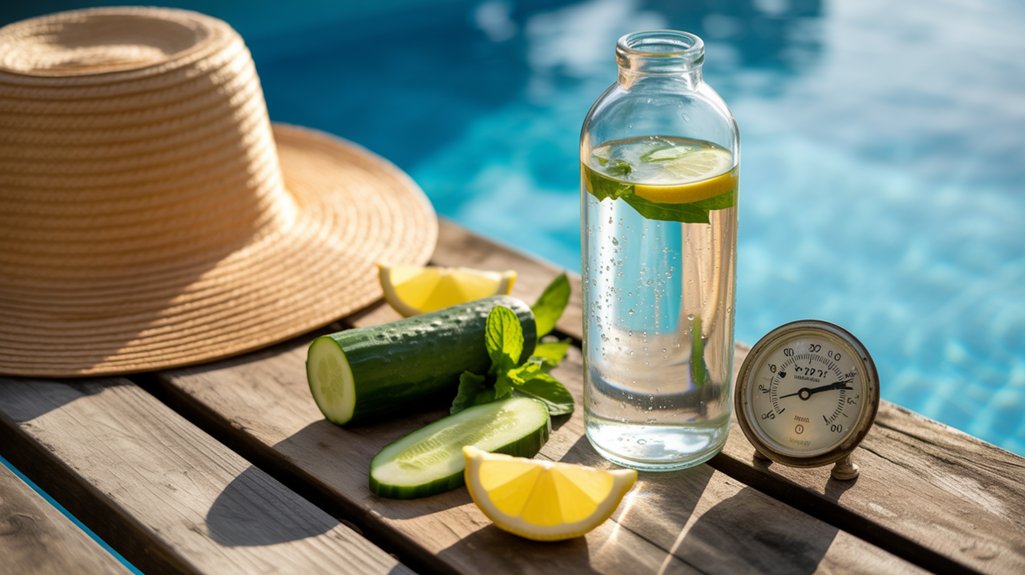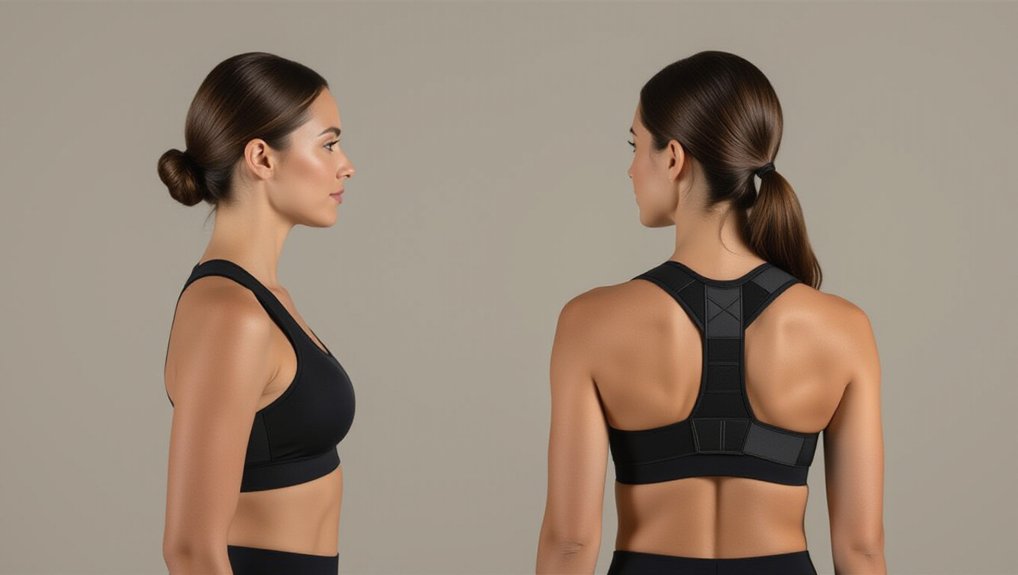You’re probably underestimating how much water your body actually needs when temperatures soar. Most people think they’re drinking enough, but summer heat creates a perfect storm of increased fluid loss through sweat, breathing, and metabolic processes that can leave you depleted before you even realize it. The difference between feeling energized and sluggish on hot days often comes down to hydration strategies you haven’t considered yet.
Understanding Your Body’s Water Needs During Summer Heat
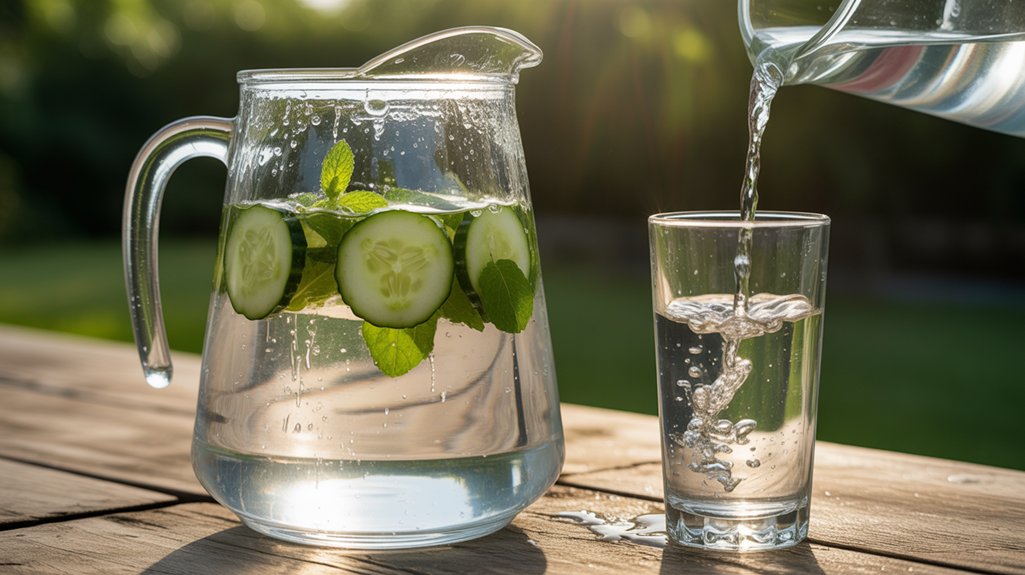
Your body’s water requirements spike dramatically when temperatures soar, as increased sweating and respiration work overtime to keep your core temperature stable.
You’ll lose fluids faster than usual, making dehydration a real threat within hours of sun exposure.
Your individual needs depend on several factors: body weight, activity level, humidity, and how long you’re outside.
Generally, you’ll need 16-24 ounces of water per hour during moderate heat exposure, increasing to 24-36 ounces during intense activity or extreme temperatures.
Watch for early dehydration signs: thirst, dark urine, fatigue, or slight dizziness.
Don’t wait until you’re thirsty—that’s already your body signaling fluid deficit.
Pre-hydrating before heading outdoors and maintaining consistent fluid intake throughout the day keeps your body’s cooling system functioning effectively.
Recognizing Early Warning Signs of Dehydration

Dehydration sneaks up faster than most people realize, especially when you’re caught up in outdoor activities or simply trying to beat the heat. Your body sends clear signals before reaching dangerous levels, so you’ll want to recognize them early.
Watch for thirst as your first indicator – it means you’re already behind on fluid intake. Check your urine color; dark yellow signals dehydration while pale yellow indicates proper hydration.
You might notice headaches, dizziness, or fatigue setting in. Your mouth and lips become dry or sticky.
Pay attention to reduced sweating despite hot conditions, as this indicates your body’s struggling to cool itself.
Muscle cramps, particularly in your legs, often signal electrolyte imbalance from fluid loss.
Best Beverages for Maximum Hydration and Electrolyte Balance
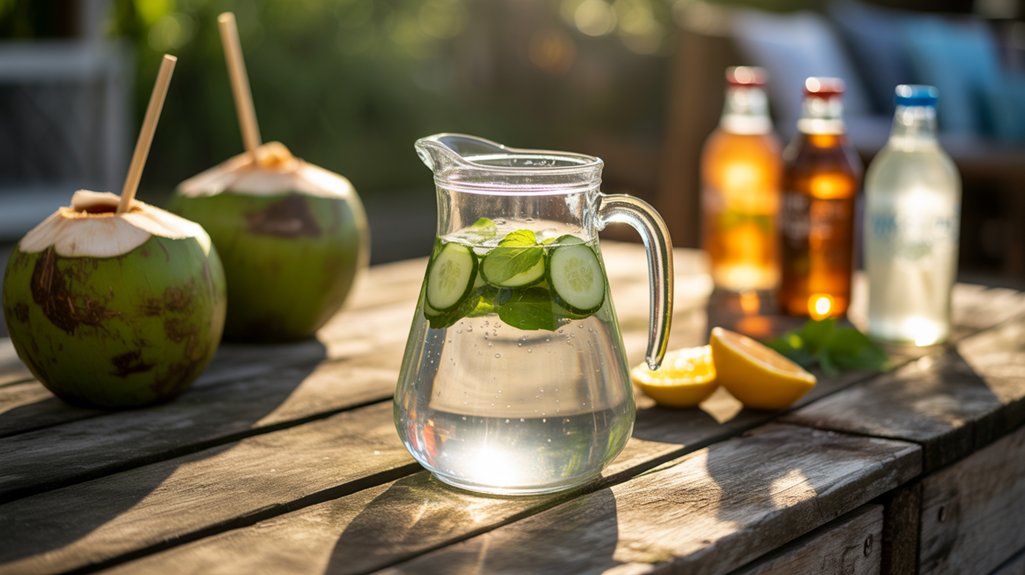
While water forms the foundation of proper hydration, you’ll need more than plain H2O to maintain optimal fluid and electrolyte balance during hot weather.
Coconut water naturally provides potassium and magnesium without excessive sugar. Sports drinks work best during intense exercise lasting over an hour, but dilute them by half to reduce sugar content.
Milk offers excellent hydration due to its protein and natural electrolytes. Fresh fruit-infused water adds flavor while providing vitamins.
Avoid alcohol, caffeine, and sugary sodas, as they’ll increase fluid loss. Herbal teas served at room temperature hydrate effectively.
You’ll absorb fluids better when they’re slightly cool rather than ice-cold. Monitor your urine color—pale yellow indicates proper hydration levels.
Timing Your Water Intake Throughout the Day
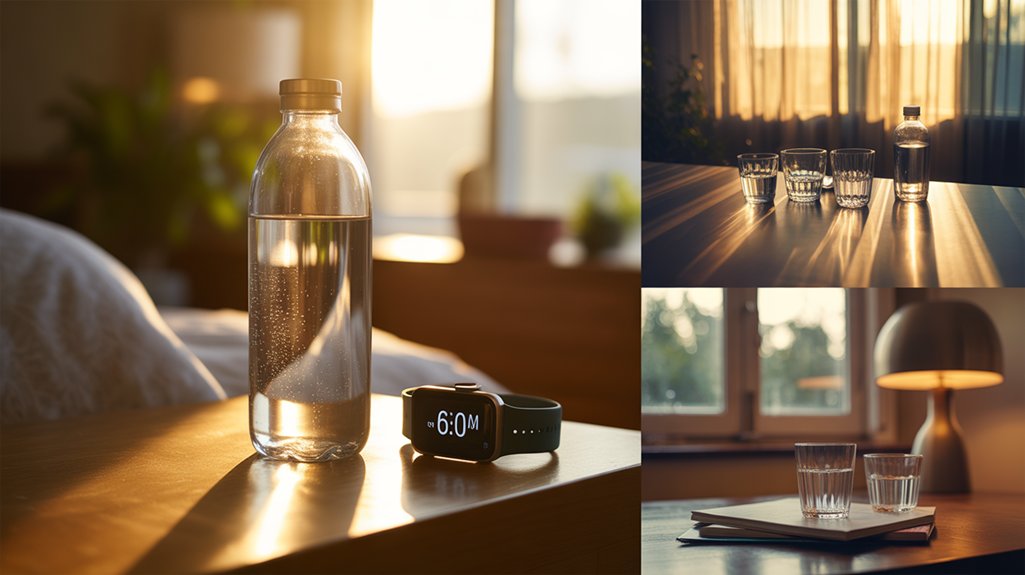
Knowing what to drink sets you up for success, but when you drink matters just as much for maintaining hydration in hot weather.
Don’t wait until you’re thirsty – that’s already a sign of dehydration. Start your day with 16-20 ounces of water upon waking to replenish overnight losses.
Drink 6-8 ounces every 15-20 minutes during hot weather activities. Pre-hydrate 2-3 hours before heading outdoors by consuming 17-20 ounces of fluid.
During meals, limit water intake to avoid diluting digestive enzymes. Sip consistently throughout afternoon heat rather than chugging large amounts.
Monitor your urine color – pale yellow indicates proper hydration.
Wind down with fluids 2 hours before bedtime to prevent sleep disruption while maintaining overnight hydration levels.
Smart Hydration Strategies for Outdoor Activities and Exercise
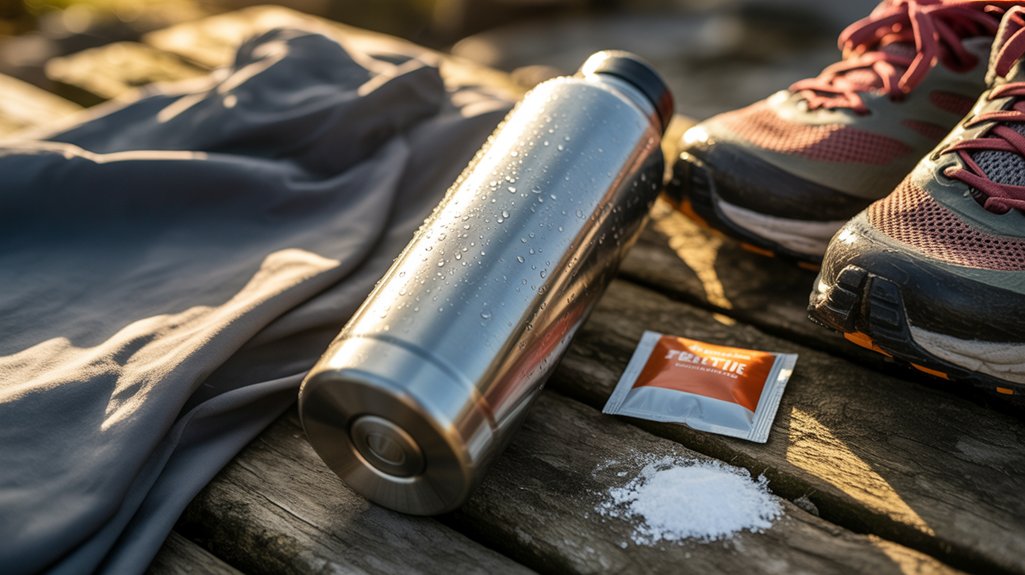
As temperatures soar and you prepare for outdoor activities, your hydration strategy must shift into high gear to match your body’s increased fluid demands. Start drinking water 2-3 hours before exercising, aiming for 16-20 ounces.
During activity, consume 6-8 ounces every 15-20 minutes, even before you feel thirsty. For workouts lasting over an hour, choose sports drinks containing electrolytes to replace sodium and potassium lost through sweat.
Monitor your urine color as a hydration gauge—pale yellow indicates proper hydration, while dark yellow signals dehydration.
Weigh yourself before and after exercise; drink 16-24 ounces of fluid for every pound lost. Consider freezing water bottles overnight for refreshingly cold drinks that’ll keep you cooler longer during intense heat.
Foods That Boost Your Hydration Levels Naturally
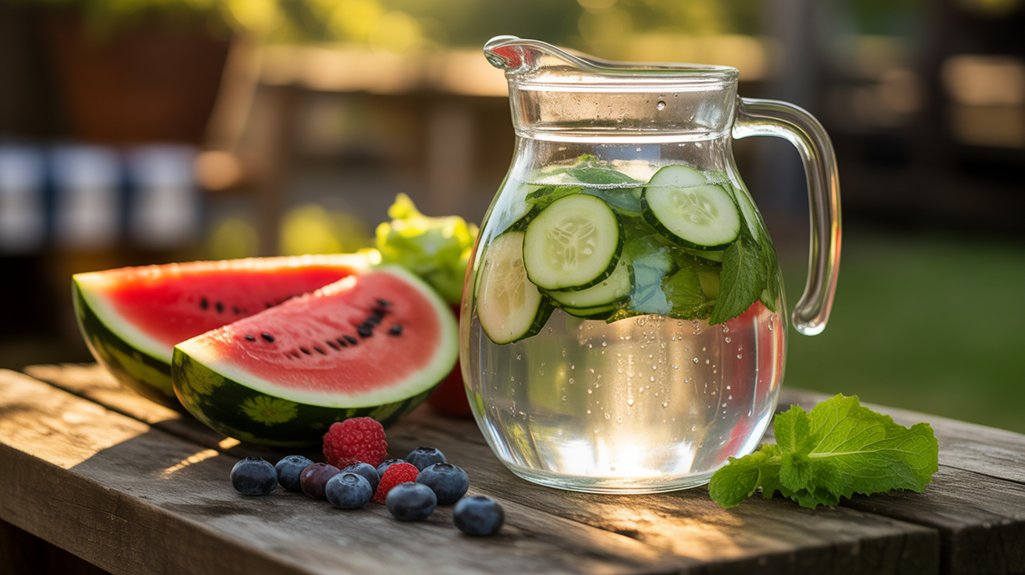
Beyond simply drinking water, you can significantly boost your hydration through strategic food choices that contain high water content and essential electrolytes.
Watermelon leads the pack at 92% water content while providing natural sugars for energy. Cucumbers offer 95% water and contain silica, which supports skin health during hot weather. Citrus fruits like oranges supply vitamin C alongside their hydrating properties.
Leafy greens such as lettuce and spinach contribute both water and potassium. Tomatoes deliver lycopene and electrolytes, while bell peppers provide hydration plus vitamin A.
Yogurt contains probiotics and maintains fluid balance through its protein content. Coconut water naturally replaces electrolytes lost through sweat.
These foods work synergistically with your water intake, providing sustained hydration while delivering nutrients your body craves during hot days.
Creating Sustainable Daily Habits for Long-Term Success
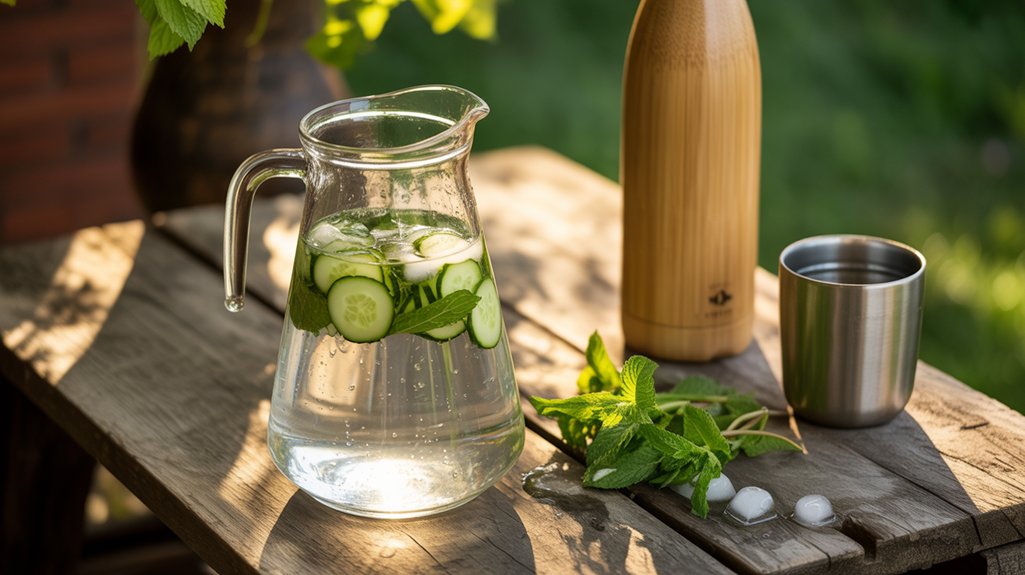
While temporary hydration fixes can help you through a single hot day, building lasting habits ensures you’ll maintain optimal fluid levels throughout the entire summer season and beyond.
Start each morning by drinking a full glass of water before anything else – this kickstarts your hydration and creates a consistent routine. Set hourly reminders on your phone to take several sips, making hydration automatic rather than reactive.
Keep a water bottle within arm’s reach at all times, whether you’re working, exercising, or relaxing. Track your daily intake using apps or simple tallies until drinking enough water becomes second nature.
Gradually increase your consumption over weeks rather than forcing dramatic changes that won’t stick.
Conclusion
You’ve learned the essential strategies for staying hydrated during hot summer days. Start implementing these habits now—drink consistently throughout the day, monitor your body’s signals, and incorporate hydrating foods into your meals. Don’t wait until you’re thirsty to take action. Make these practices part of your daily routine, and you’ll maintain optimal hydration levels while protecting your health during the hottest days of summer.
